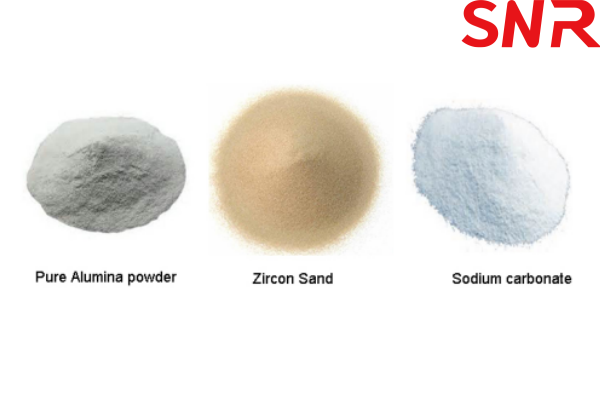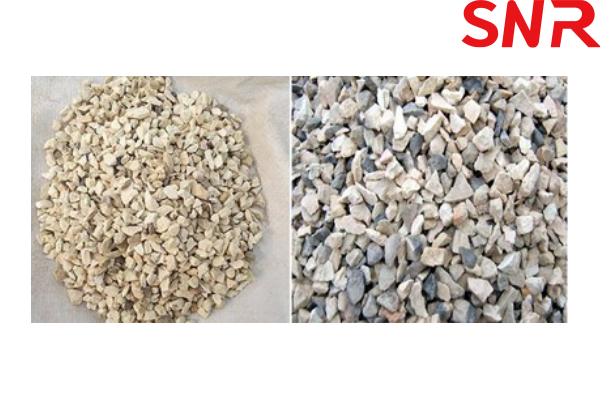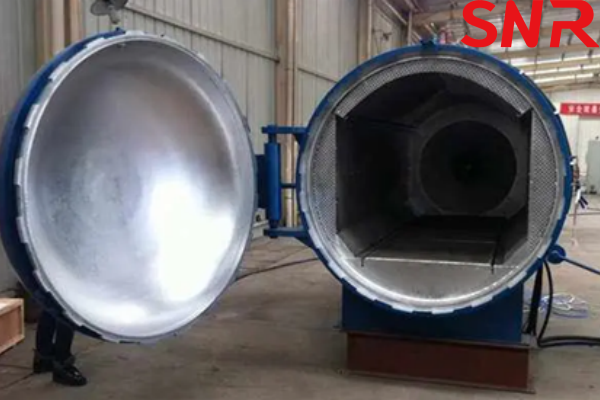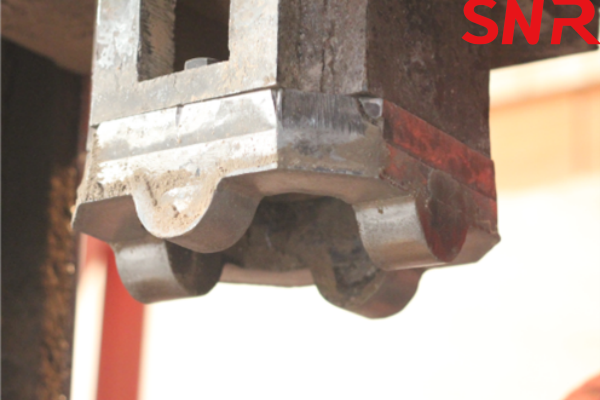The raw materials of Fused Cast AZS refractory blocks mainly include alumina (Al₂O₃), zirconia (ZrO₂) silicon oxide (SiO₂), and other raw materials. When selecting raw materials, their chemical composition, mineral composition, particle size distribution, and other factors need to be considered, and the chemical composition and physical properties of these raw materials must meet the standard requirements. In addition, these raw materials need to undergo strict screening and processing to ensure the purity of the composition. I will tell you how to produce high-quality refractory blocks in this article.
1. Rigorous Screening and Processing of Raw Materials
2. Improvement of Clay Mixing Uniformity
3. Choose the Right Molding Process and Equipment
4. Ensure Uniformity and Stability of Firing Temperature
5. Professional handling out of the furnace
6. Quality control
1.Rigorous Screening
The raw materials of Fused Cast AZS refractory block mainly include zirconia, silica and alumina. When selecting raw materials, their chemical composition, mineral composition, particle size distribution and other factors need to be considered, and the chemical composition and physical properties of these raw materials must meet the standard requirements. In addition, these raw materials need to be strictly screened and processed to ensure the purity of the composition.
1.1 Raw material proportioning control
♦The proportions of the different raw materials, such as clay, refractory powder, flux, etc., need to be precisely controlled in order to achieve optimum sintering properties. According to the performance requirements of the product, the proportion of raw materials is precisely calculated and adjusted. Different ratios will affect the refractoriness, erosion resistance, thermal shock stability and other properties of the product.
♦The type and amount of additives, such as organic binding agents and dispersants, should also be strictly controlled.
1.2 Particle size distribution control
The uniformity of the raw material particle size distribution is critical for molding and refractory block quality.
Refractory raw material crushing is the use of mechanical methods (or other methods) to reduce the bulk material into granular and powder material processing, customarily known as crushing, specifically divided into coarse crushing, medium crushing, and fine crushing. Coarse crushing, medium crushing, and fine crushing according to the need to adjust the control particle size. Coarse crushing, medium crushing, and fine crushing are used in different equipment.
(A) Rough Crushing
Coarse crushing - material lump size from 350mm crushed to less than 50 ~ 70mm.
(B) Medium Crushing
Medium crushing - material size from 50 ~ 70mm crushed to less than 5 ~ 20mm.
(C) Fine Crushing
Fine crushing (fine grinding) - material size from 5 ~ 30mm fine grinding to less than 0.088mm or 0.044mm, or even about 0.002mm.
Raw materials in the breaking and crushing process inevitably bring a certain amount of metal and iron impurities. These metal iron impurities on the high temperature performance and appearance of the products caused serious impact, must be removed through the impurity program. Iron removal methods include physical iron removal and chemical iron removal. Physical iron removal method is to use strong magnetic separator to remove iron, particles and fine powder selection of different special equipment. Chemical iron removal method is the use of acid washing method to remove iron. For white corundum and other high-purity raw materials, the use of this method to remove iron in order to ensure the high purity of raw materials.
After crushing, refractory raw materials are generally a continuous mix of small, medium, and large particles. To obtain the particle components in line with the specified size, screening is required. Screening refers to the broken and crushed materials, through a certain size of the sieve holes, so that the different particle sizes of the raw materials separate the process. Commonly used methods of expression have holes, the number and the actual size of the sieve holes in mm, and so on.
2.Improvement of Clay Mixing Uniformity
Mixing is a clay preparation process in which materials of different components and particle sizes are mixed with the appropriate amount of binding agent to achieve uniform distribution and adequate wetting through mixing and extrusion. Mixing is a way of mixing, accompanied by a certain degree of extrusion, kneading and exhaust process.
There are many factors affecting the uniformity of clay mixing, such as the reasonable choice of mixing equipment, appropriate control of mixing time, as well as a reasonable choice of binding agent and appropriate control of its addition, etc., are conducive to improving the uniformity of clay mixing. In addition, the feeding order and the particle shape of the powder on the uniformity of the mud mixing also has an impact, such as approximate spherical particles of internal friction is small, in the mixing process of the relative speed of movement is large, easy to mix evenly, angular particles of the internal friction of the material is large, it is not easy to mix evenly, so the former compared to the need for a long time of mixing.
2.1 Mixing time
In mud mixing, usually the longer the mixing time, the more evenly mixed.
The proportion of materials in the ridge material, binding agent and material wettability and other impact on the degree of difficulty of mixing, so different properties of the mud on the mixing time requirements are different. Such as with wet mill mixing, clay block material for 4 to 10 minutes, silicon block material for about 15 minutes, magnesium block material is about 20 minutes, aluminum carbon material is about 30 minutes. Mixing time is too short, will affect the uniformity of the mud; and mixing time is too long, but also due to the particles of the re-crushing and evaporation of mud heat and affect the molding properties of the mud. Therefore, the mixing time of different block types of mud should be appropriately controlled.
2.2 Mixing sequence
Usually add the granular material first, then add the binding agent, mix for 2~3 minutes, then add the fine powder material, mix until the mud is uniform. The mixing quality of the clay has a great influence on the molding and product performance. The quality of the mixed mud is manifested in the uniformity of the composition of the mud (chemical composition, particle size) and the plasticity of the mud. In the actual production of high-aluminum blocks, usually to check the composition of the mud particles and moisture content to assess whether it is qualified or not.
The quality of well-mixed mud is good, the fine powder forms a layer of film uniformly surrounding the particles, the moisture is evenly distributed, not only exists on the surface of the particles, but also penetrates into the pores of the particles; the mud is dense and has good molding properties. If the quality of the well-mixed mud is not good, then the material has a loose feeling when touched by hand, and the molding performance of this mud is bad.
3.Choose the Right Molding Process and Equipment
The process of processing clay into a billet with a certain shape is called molding, and molding is an important part of the production process. In the molding process, the need for raw materials for mixing, aging, extrusion and cutting and other processes to form a certain shape and size of the billet. The density, strength and dimensional accuracy of the billet have a direct impact on the quality of refractory blocks. Therefore, it is necessary to choose the appropriate molding process and equipment to ensure the quality of the billet.
The molded billet has a denser and more uniform structure with a certain degree of strength.The following molding methods are commonly used to produce Fused cast AZS block products:
3.1 Slurry molding
3.2 plastic molding
Plastic molding (also known as extrusion molding), generally refers to the water content of 16 ~ 25% of the plastic state of the clay billeting method, so that the plasticity of the clay material through the holes of the mold molding method is called extrusion molding. Usually use continuous spiral extruder or vane mixer and hydraulic machine connected, the mud will be mixed, extrusion and molding. This molding method is suitable for processing plastic clay into billets such as strips and tubes with a uniform cross-section.
3.3 Machine molding
Machine press molding, also known as semi-dry molding, refers to the method of preparing blanks from mud with a moisture content of about 2 to 7%. Generally using a variety of block presses, tamping machines, vibration machinery molding. Compared with plastic molding, billet has the advantages of high density, strength, drying and firing shrinkage is small, the product size is easy to control, semi-dry molding is a commonly used molding method.
3.4 Fusion molding
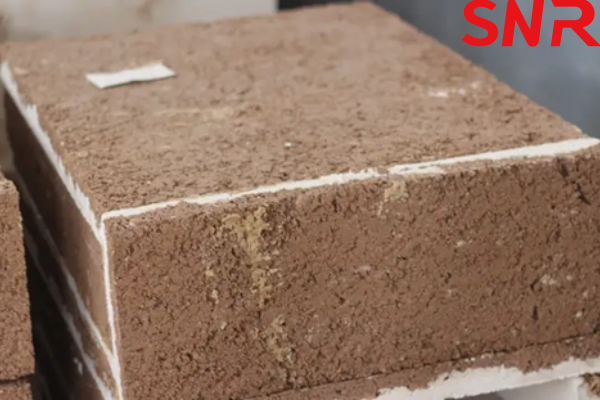
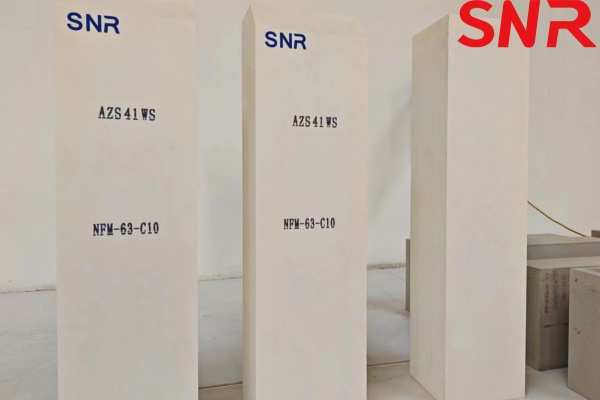
This is a method of casting materials directly into products after melting them at high temperature. At present, it is mainly used for the production of advanced refractories such as electrofused corundum, mullite and zirconium corundum.
4. Ensure Uniformity and Stability of Firing Temperature
Firing is one of the key aspects of Fused cast AZS refractory blocks production. In the firing process, factors such as temperature, time and atmosphere need to be controlled to obtain blocks with good properties. The temperature of firing is usually between 1000°C and 1200°C, and the uniformity and stability of the temperature need to be ensured.
The firing temperature of refractory products depends mainly on:
(A) The nature of the raw materials used. The melting point of the main mineral phase of the raw material, the lowest co-melting point temperature between the mineral phase and the number of firing temperature is directly related. Refractory products reference firing temperature is about 0.8 times the melting point temperature of the main mineral phase. Therefore, the high purity magnesium block firing temperature is higher than magnesium spinel block; corundum block firing temperature is higher than mullite block; alkaline refractory products firing temperature is higher than high aluminum refractory products;
(B) For the same material, the higher the purity of raw materials, the higher the firing temperature. High purity of direct bonded alkaline products firing temperature is higher than the silicate bonded alkaline products.
(C) The particle size of the raw material fine powder. The higher the dispersion, the greater the specific surface area, the greater the surface free energy, the greater the sintering power. Therefore, micronized powder can promote sintering and reduce the sintering temperature.
Refractory products sintering, in the heating and cooling process, the permitted rate of heating (cooling) and the necessary holding time.
Therefore, it is necessary to choose the appropriate firing process and equipment to ensure the quality and performance of Fused cast AZS 33#blocks, Fused cast AZS 36#blocks, Fused cast AZS 41#blocks.
5.Professional handling out of the glass furnace
Out of the glass furnace is to be fired products after cooling from the glass furnace out of the operation process. The good or bad operation of the glass furnace has a direct impact on the quality of the finished product. In the process of glass furnace, if the operation is not careful or skillful, it will often cause the products to be missing edges and corners, thus reducing the qualified rate of finished products.
In the production of refractory materials, glass furnace operation should generally pay attention to the following points:
(A) When taking blocks and putting blocks, it should be done gently to avoid the defects of product appearance caused by careless operation of the glass furnace.
(B) Different block number of products should be strictly separated from the pile, different block number of products out of the glass furnace can not be placed on the same block plate, easy to cause confusion. Different types of blocks are stacked with marking.
(C) The tool blocks (rack blocks, pulling blocks, etc.) should be organized and stacked for continued use when loading the glass furnace.
(D) Attention should be paid to safe operation and labor protection when leaving the glass furnace and transporting blocks.
6. Quality control
Quality control is one of the important aspects of production. In the production process, it is necessary to carry out quality testing and control of multiple processes, including raw material testing, molding quality testing, firing quality testing and so on. Through quality control, it can ensure that the size, appearance and performance of Fused zirconium corundum blocks meet the standard requirements and improve the qualification rate and stability of the products.
From the crushing of raw materials, through a series of processing and manufacturing processes, until the refractory products fired out of the glass furnace, the shape and size of the products may not be all qualified products, there are a number of shape quality does not meet the requirements of the waste products. Finished product picking work, that is, picking workers in accordance with national standards, or the relevant contract terms of different refractory products shape requirements of the project and technical requirements, the finished product one by one piece of inspection, eliminating substandard products; according to the standard provisions or the use of the requirements of the qualified products will be graded to ensure that the shape of the Fused cast AZS blocks products to ensure that the quality of the level of the factory in accordance with the standard provisions of the grade.
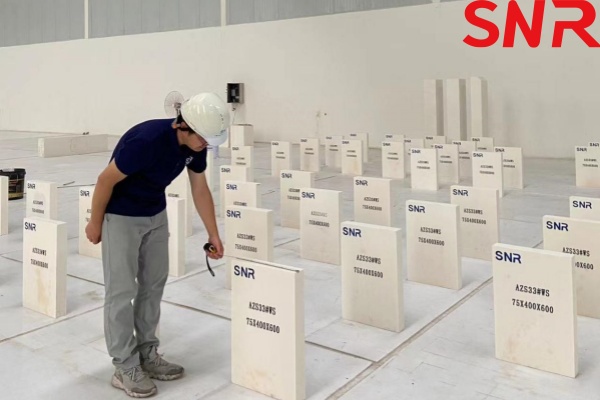

In short, the production of high-quality refractory Fused cast AZS blocks requires good control of raw material selection, molding, firing and quality control. Only by grasping these key elements can we produce high-performance blocks that meet market demand.
Henan SNR Refractory Co., Ltd (SNR) is professional in producing high-quality Fused Cast AZS Blocks for glass furnaces. If you have any needs, please contact me!
Email:zoe@snrefractory.com
Web:www.snr-azs.com 


